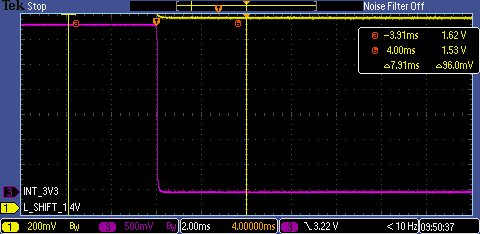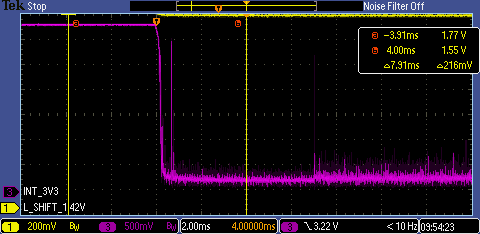Hi All:
I am using CD74HC4050 on my design.
When i measure CD74HC4050 VIL ( VCC: 3.3V).
I found following things:
1. Input voltage under 1.4V, CD74HC4050 output 0V (Fig.1)
2. Input voltage between 1.415V to 1.425V, CD74HC4050 output unstable waveform (Fig.2)
My questions are:
1. From datasheet, there have no VIL value(max) operated at VCC 3.3V, can i use interpolation method to acquire this value ?
2. If i use interpolation method, the calculated VIL(max) is about 0.93V. This value is high difference of my measurement result 1.4V, why ??
3. Spec. mentioned this part have High Noise Immunity: NIL:30%, NIH:30% of VCC at VCC =5V. What does this mean? It means CD74HC4050 has schmitt trigger buffer or ??
Thanks
Jimmy
Fig1
Fig2





